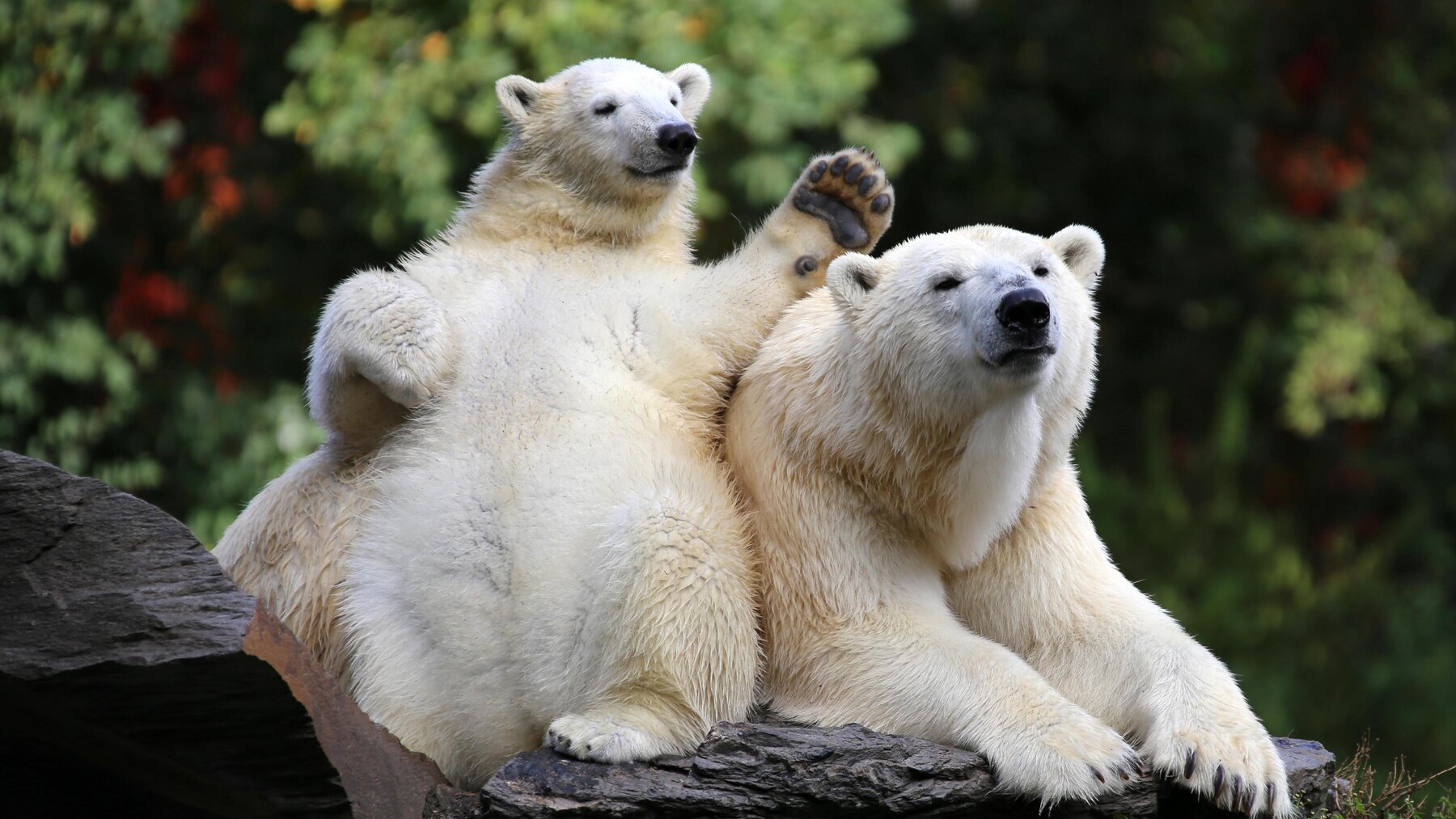
Polar Bear
Ursus maritimus
With the standing height of the polar bear, also called 'ice bear', reaching up to three metres, it is one of the biggest land-based predators on Earth. It has no natural enemies in its home in the arctic and is a solitary animal that spends its time hunting for seals.
Perfectly adapted
Polar bears are perfectly equipped for life in the Arctic. During times in which prey is in abundance, they develop a layer of fat reaching ten centimetres. This and the thick fur keeps the polar bears warm in icy temperatures of up to minus 50 degrees centigrade and is used as an energy storage.
Optional section: Sluggish on shore – gallant in the water
In the case of heavy exertion and whilst running, they are able to release excess body heat outwardly solely using their tongue, which is why they prefer to move more slowly. They are genuine long-distance swimmers under water since they use their broad paws with webbed toes like paddles.
Charakteristics
- Origin
Arctic
- Habitat
coasts and solid ice
- Diet
Seals, fish, small mammals, berries, fruits
- Status
approx. 20,000 to 25,000
- Size
2.50 m length, shoulder height up to 1.60 m
- Weight
Female 300 kg
Male up to 600 kg - Gestation period
2-3 months (period between delayed nesting and birth).
- Achievable age
approx. 30 years in human care
Threat Categories of IUCN


Thick fur – camouflage and heating simultaneously
Thanks to their fur, polar bears are hardly visible to their prey in the snow and are thus perfectly camouflaged. At the same time, their hair is not white, but actually transparent and hollow. The sun's rays can be transfered to the underlying black skin thanks to this structure, which acts as an excellent storage of heat – a heating system produced naturally in the body!
Polar bear babies as small as guinea pigs
Expectant polar bear mothers hole themselves up in snow caves between November and January to give birth and nurse their offspring into the world. At birth, the young are bare, blind, deaf and are barely bigger than guinea pigs. The mothers only leave the caves with the little ones weighing ten kilos after three months. She must regain her strength to fill the mouths of the hungry bears with their milk for another 17 months.
Did you know that...
…polar bear cubs are born in snow caves and are as big as a guinea pigs,
…polar bears have a very good sense of smell to help them locate their pray?

